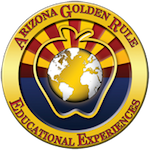Explore Change with your club or students. Listen to the segment which includes students sharing several facets of being successful during change, including open-mindedness and getting out of our comfort zones. As a group, use this video and accompanying guide to facilitate your own discussion, keeping in mind that being kind to those in transition is a way to put the Golden Rule into practice.
ELA Comprehension and Collaboration – 6.SL.1-3, 7.SL.1-3, 8.SL.1-3, 9-10.SL.1-3, 11-12.SL.1-3 Engage effectively in a range of collaborative discussions (one-on-one, in groups, and teacher-led) with diverse partners on grade 6 topics, texts, and issues, building on others’ ideas and expressing their own clearly.



